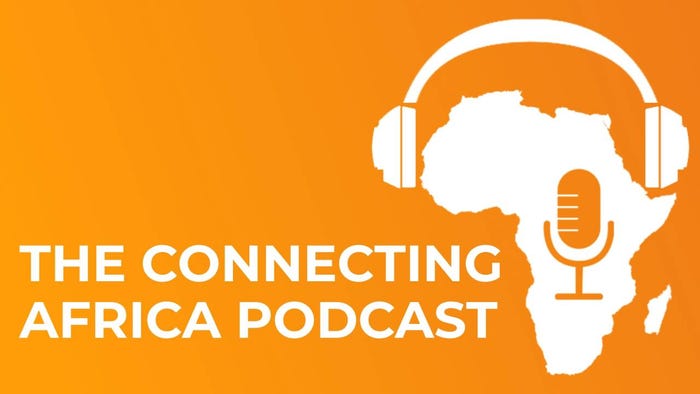e& Egypt upgrades network with Ericsson Antenna System
Egyptian telecom operator e& Egypt has partnered with Swedish ICT company Ericsson to utilize its 20-port antennas for site sharing, advancing toward its upcoming 5G technology rollout.

Egyptian telecom operator e& Egypt has partnered with Swedish ICT company Ericsson to utilize its 20-port antennas for site sharing, advancing toward its upcoming fifth-generation (5G) technology rollout.
The collaboration will see the deployment of Ericsson's 20-port antennas from the Ericsson Antenna System (EAS), a crucial step in optimizing e& Egypt's network for 5G technology rollout.
According to Ericsson the partnership is a significant milestone for Egypt's telecommunications landscape as it leverages high-order site sharing, allowing all operators in the country to benefit from e& Egypt's infrastructure.
Ericsson said the advanced antenna system caters to the demands of modern networks, featuring multiple frequencies and technologies on a single radio site.
According to the statement, the integration of advanced EAS antennas will provide users across Egypt with faster speeds, greater reliability and better connectivity.
"e& is committed to supporting, building, and developing the communities in which it operates. Our efforts in Egypt align with the Sustainable Development Strategy (SDS): Egypt Vision 2030," stated Hossam Abdelkader, networks director at e& Egypt.
Abdelkader added that the partnership with Ericsson will enable e& Egypt to unlock new opportunities for consumers and businesses by expanding 4G capabilities and laying the groundwork for 5G.
"By harnessing the power of high-performance antennas, we are not just optimizing networks, we are laying the groundwork for a seamless transition to 5G and beyond," added Salman Ateeque, head of network solutions for Global Customer Unit e&, Gulf Cooperation Council (GCC) Countries and Pakistan at Ericsson Middle East and Africa.
Egypt's mobile market
The partnership between e& Egypt and Ericsson comes at a time when the North African country's telcos have been moving toward rolling out 5G.
In July, Telecom Egypt and Nokia partnered to bring 5G to Egypt, after it become the first company to secure a 5G license in the country in January.

e& Egypt will deploy Ericsson's 20-port antennas, seen as a crucial step in optimizing the telco's network for 5G rollout. (Source: Image by freepik)
Statistics from market research company Omdia, a sister company of Connecting Africa, show that at the end of the second quarter of 2024, Etisalat (e& Egypt) had 30.4 million mobile users.
Vodafone Egypt – now majority controlled by SA's Vodacom – is the country's biggest mobile operator, with around 49 million subscribers around the same period.
Orange Egypt has about 30.2 million subscribers. Telecom Egypt had about 13.1 million mobile subscribers around the same time.
Ericsson's business in Egypt
Ericsson's latest partnership with e& Egypt adds to the company's presence in the Egyptian market.
In recent months, the Swedish ICT company secured several deals, including a June partnership with Vodafone Egypt for its triple-band radio unit, which supports both frequency division duplex (FDD) and time division duplex (TDD).
Additionally, in April the company signed a multi-year agreement with Orange Egypt to support its digital transformation journey.
Ericsson's African commitment
Ericsson continues to strengthen its commitment not only to the Egyptian market, but also the African region, including hiring in key positions.
Just last month, Ericsson appointed Patrick Johansson as the new senior VP and head of its market area for the Middle East and Africa (MEA), replacing Fadi Pharaon.
In May, Ericsson announced that Pharaon was leaving the company to pursue other opportunities. Pharaon has led the MEA business since 2019 and has worked for Ericsson for 26 years.
Pharaon's departure followed the company's appointment of Majda Lahlou Kassi as the VP and head of Ericsson West Africa and Morocco in January this year.
— Matshepo Sehloho, Associate Editor, Connecting Africa
Read more about:
North Africa_(1).jpg?width=100&auto=webp&quality=80&disable=upscale)
_(1).jpg?width=400&auto=webp&quality=80&disable=upscale)
.jpg?width=700&auto=webp&quality=80&disable=upscale)
_(1).jpg?width=700&auto=webp&quality=80&disable=upscale)
_(1).jpg?width=700&auto=webp&quality=80&disable=upscale)
_(1).jpg?width=700&auto=webp&quality=80&disable=upscale)

.jpg?width=700&auto=webp&quality=80&disable=upscale)

